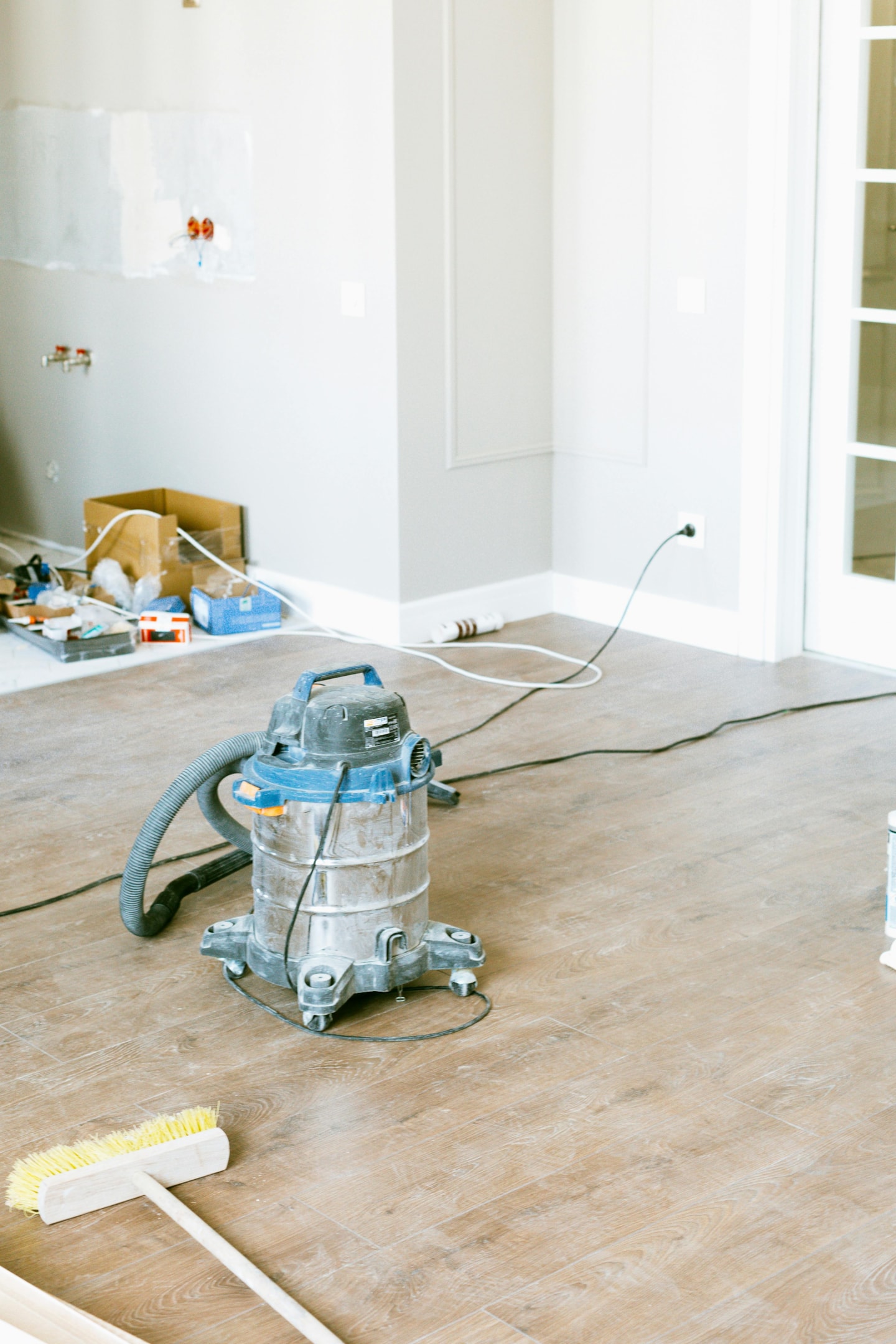What Type of Properties are Best for Flipping Houses Successfully?

Introduction
Flipping houses isn't just something you see on HGTV—it's a real business that can be highly profitable if you start by choosing the right property. Not all homes are created equal for flipping; picking the wrong one can turn into a money pit, while the right choice sets you up for success. Essential financial considerations such as carrying costs, including mortgage payments, utilities, insurance, and property taxes, can significantly impact profit margins. Similarly, closing costs are crucial, especially when using loans, as they affect overall profitability. Let's explore the types of properties that offer the best opportunities for successful house flipping.
Understanding Flipping Houses
Definition and Importance of House Flipping
House flipping is a real estate investment strategy where investors purchase, renovate, and sell properties for profit. This approach has gained traction due to its potential for high returns and the ability to transform undervalued properties. It plays a vital role in the real estate market by revitalizing neighborhoods, boosting property values, and providing affordable housing options. Understanding house flipping is crucial for real estate investors, as it enables them to make informed decisions and navigate the complexities of real estate investing. By mastering this strategy, investors can capitalize on real estate investment opportunities, ensuring profitable outcomes in the competitive real estate market.
The Ideal House Flip — Key Characteristics
Location, Location, Location
You've heard it a million times—and for good reason. A great flip in a bad location is still a bad deal. Look for areas with growing job markets, good schools, low crime rates, and easy access to highways, shopping, and amenities. Understanding the local market is crucial to identify these areas and make informed decisions. If people want to live there, chances are someone will want to buy your flipped home. To see some of the best places for investing in real estate today, read The Best Place to Buy Investment Property: Top Cities to Consider.
Strong Resale Potential
When flipping houses, you're not just fixing up a home—you're creating a market-ready product. Prioritize properties in areas with strong buyer demand, characterized by quick turnover rates, rising property values, and high rental demand if resale doesn't pan out. Monitoring property prices in the area is essential for assessing resale potential. This strategic approach ensures that your investment aligns with market trends, maximizing your chances for a successful sale. By focusing on these key indicators, you can make informed decisions that enhance your real estate investment opportunities and lead to profitable outcomes in the competitive market.
Cosmetic vs. Structural Issues
The perfect flip is ugly on the surface but solid underneath. Cosmetic updates like new paint, flooring, fixtures, and cabinets are cheap and easy. But foundation issues? Roof replacements? Full plumbing or electrical overhauls? Those will eat your budget alive. Accurately estimating renovation costs is crucial to avoid financial shortfalls and ensure the profitability of your project.

Property Types to Consider
Single-Family Homes
Single-family homes are the gold standard for flipping. They're easier to finance, easier to sell, and generally appeal to the widest group of buyers—especially first-time homeowners. Working with a knowledgeable real estate agent can help identify the best single-family homes for flipping.
Condos and Townhomes
Condos can work for flipping, but they come with baggage—think HOA rules, fees, and resale restrictions. They're usually best for urban markets or beginner flippers working with smaller budgets. Experienced real estate agents can help navigate these HOA rules, fees, and resale restrictions, ensuring a smoother flipping process.
Small Multifamily Properties
Duplexes and triplexes can be profitable flips, especially if marketed to investors or house-hackers, as they offer multiple rental income opportunities. It's essential to understand local rental laws and zoning regulations to ensure compliance and avoid potential legal issues. Checking real estate listings regularly can help identify suitable duplexes and triplexes for flipping, allowing real estate investors to capitalize on these investment opportunities. By strategically selecting properties in desirable neighborhoods and accurately estimating renovation costs, house flippers can maximize their potential profits from these types of properties.
Foreclosures and REOs
Bank-owned homes, sold as-is and often in disrepair, offer real estate investors discounted prices and potential for profit. Successful house flippers focus on negotiating favorable purchase prices and accurately estimating renovation costs to transform these distressed properties into successful sales by leveraging their understanding of the local real estate market.
Distressed Properties — A House Flipping Playground
Definition of Distressed
A distressed property is one that's in poor condition, in foreclosure, or behind on taxes or mortgage payments, often resulting from financial hardship or neglect. Such properties can be ideal for flipping houses if they meet specific criteria, such as adhering to the 70% rule and accurately assessing repair costs to ensure profitability after renovations. Real estate investors find these properties attractive due to motivated sellers, low competition, and flexible pricing, which can lead to significant discounts and profits. By focusing on these opportunities, house flippers can transform distressed properties into successful sales, leveraging their understanding of the local real estate market to maximize potential profits. For tips on where to find distressed properties, read Distressed Property Leads: The Ultimate Guide for Real Estate Investors.
Why They're Goldmines
Sellers are motivated, competition is low, and pricing is often flexible. The uglier the house, the bigger your potential discount—and profit. Additionally, choosing the right distressed properties can make it highly profitable to flip houses.
Signs a Property is Distressed
Overgrown lawn
Piled-up mail or notices on the door
Boarded windows
Unusual odor or trash buildup
If the house looks abandoned or neglected, you might be staring at a hidden gem.

The "Ugly But Solid" House Strategy
Outdated But Structurally Sound
If the house has outdated features like old wallpaper, linoleum floors, and avocado-green appliances, but the roof, plumbing, and foundation are solid, you're in luck. These homes require cosmetic updates rather than extensive structural repairs, making them ideal candidates for a profitable flip. An experienced real estate investor can easily identify these properties, increasing the likelihood of a successful house flip. By focusing on aesthetic improvements, such as painting, updating fixtures, and enhancing curb appeal, you can transform these homes into attractive options for buyers, ultimately maximizing your potential profits in the competitive real estate market.
Maximizing Cosmetic Updates
Paint, flooring, fixtures, and curb appeal—these updates go a long way for a low price. Focusing on the kitchen and bathrooms for the best ROI can significantly enhance a property's market value. By concentrating on cosmetic updates, house flippers can transform properties into more attractive options for buyers, ultimately increasing their market appeal and potential selling price. These strategic improvements not only boost the aesthetic appeal but also elevate the overall value of the home, contributing to a more successful house flip.
Avoiding the Money Pits
Red Flags That Kill Deals
Flipping houses requires vigilance to avoid potential pitfalls that can turn a promising investment into a costly mistake. Key red flags include foundation cracks indicating structural issues, termite infestations causing wood damage, and black mold signaling moisture problems. Major plumbing or electrical failures can lead to unexpected expenses and delays. Additionally, declining neighborhood home values may suggest low buyer interest and a challenging resale market. Identifying these red flags is crucial for house flippers to avoid costly errors and ensure a successful flip.
When to Walk Away
If the rehab cost eats more than 70% of the after-repair value (ARV)—or if the area has no resale demand—it's better to move on.
Neighborhood Factors That Impact Profit
School Districts and Amenities
Parents care about schools. So should you.Even if you don't have children, it's important to consider good school districts because they enhance property values and attract prospective buyers.
Comparable Property Values
Pull comps for recently sold, similar homes nearby. If fixed-up homes in the area are selling fast and at a premium, you're probably in the right place.
Financing and Budgeting

Financing Options for House Flippers
House flippers have several financing options available to them, each with its own set of advantages and considerations:
Hard Money Loans: These loans are provided by private lenders and are typically used for short-term financing needs. They often come with higher interest rates but are easier to qualify for and can be secured quickly, making them ideal for house flippers who need to move fast.
Private Money Loans: These loans are provided by private investors and can be used for a variety of financing needs. They offer more flexible terms compared to traditional bank loans and can be a good option for house flippers looking for tailored financing solutions.
Partnering with Investors: House flippers can partner with investors to secure financing for their projects. This approach allows them to share the financial risk and benefit from the investor's experience and resources.
Using Personal Funds: Some house flippers choose to use their personal funds to finance their projects. While this can be risky and may limit their ability to take on multiple projects, it also means they won't have to deal with loan interest or repayment schedules.
Choosing the right financing option is crucial for the success of a house flip. By understanding the various options available, house flippers can make informed decisions that align with their financial goals and project timelines. To learn more about setting a proper budget for your project, read How to Finance a House Flip: A Guide for Real Estate Investors.
Off-Market Opportunities
Driving for Dollars
Driving for dollars is a classic house flipping strategy where you physically explore neighborhoods to identify potential investment opportunities. As you drive around, keep an eye out for homes that show signs of neglect or distress, such as overgrown lawns, peeling paint, or boarded-up windows. Take detailed notes and photographs of these properties, as they may indicate motivated sellers willing to negotiate favorable terms. Once you've identified potential leads, reach out to the homeowners directly through mail or phone calls. This hands-on approach allows you to find hidden gems that aren't listed on the multiple listing service, giving you a competitive edge in the real estate market.
Networking and Referrals
Building a strong network is crucial for success in real estate investing. Engage with real estate agents, attorneys, contractors, wholesalers, and even neighbors to uncover off-market opportunities. Attend local real estate investment groups, workshops, and seminars to connect with industry professionals who can provide valuable insights and leads. Networking can lead to referrals from individuals who are aware of properties not yet on the market or owners looking to sell quickly. By fostering these relationships, you'll gain access to exclusive real estate investment opportunities, allowing you to secure profitable deals before they become public knowledge. For more tips on how to effectively network within the real estate space, read Mastering Real Estate Networking: Successful Strategies for Success.
Direct Mail and Cold Outreach
Direct mail and cold outreach are effective marketing strategies for reaching potential sellers who may not be actively listing their properties. Craft personalized postcards or letters targeting absentee owners, probate leads, or pre-foreclosures, highlighting your interest in purchasing their property. Consistent follow-up is essential, as it keeps you top-of-mind for when the owner decides to sell. By establishing a direct line of communication, you can negotiate terms favorable to both parties, often resulting in a successful house flip. This proactive approach allows you to tap into a pool of motivated sellers, increasing your chances of finding the right property at the right sale price.

Conclusion
Flipping houses can be a rewarding venture when approached with strategic planning and a keen understanding of the real estate market. By selecting the right property types—whether it's a single-family home, a condo, or a distressed property—and focusing on desirable neighborhoods, house flippers can maximize their potential profits. It's essential to conduct thorough research, accurately estimate renovation costs, and choose suitable financing options to ensure a successful flip. With the right combination of location, property selection, and strategic planning, you can transform a fixer-upper into a profitable real estate investment. Remember, the key to success in flipping houses lies in making informed decisions, staying adaptable, and continuously analyzing market trends to stay ahead in this competitive industry.